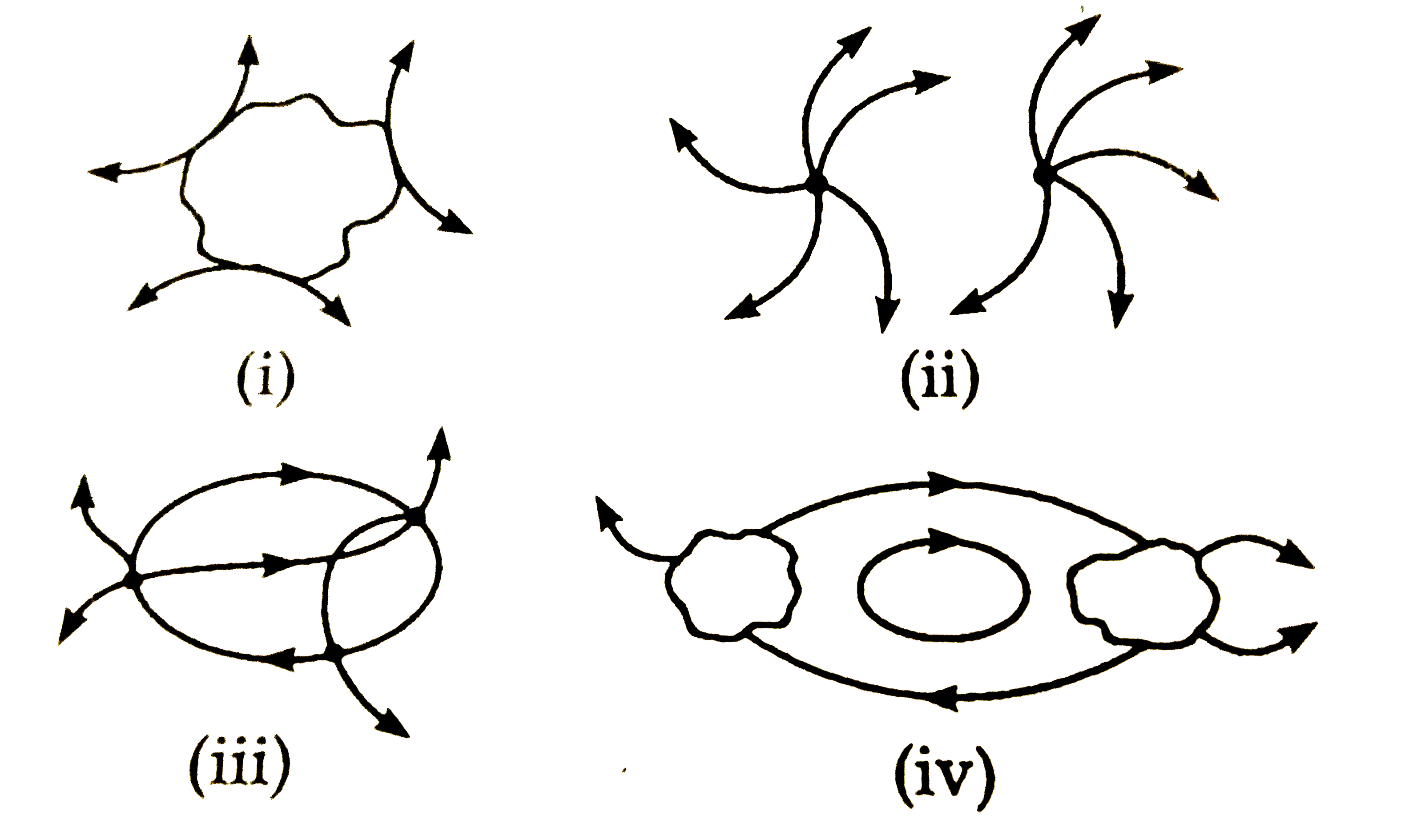Consider the four field patterns shown. Assuming there are no charge in the regions shown, which of the patterns represent a possible electrostatic field?
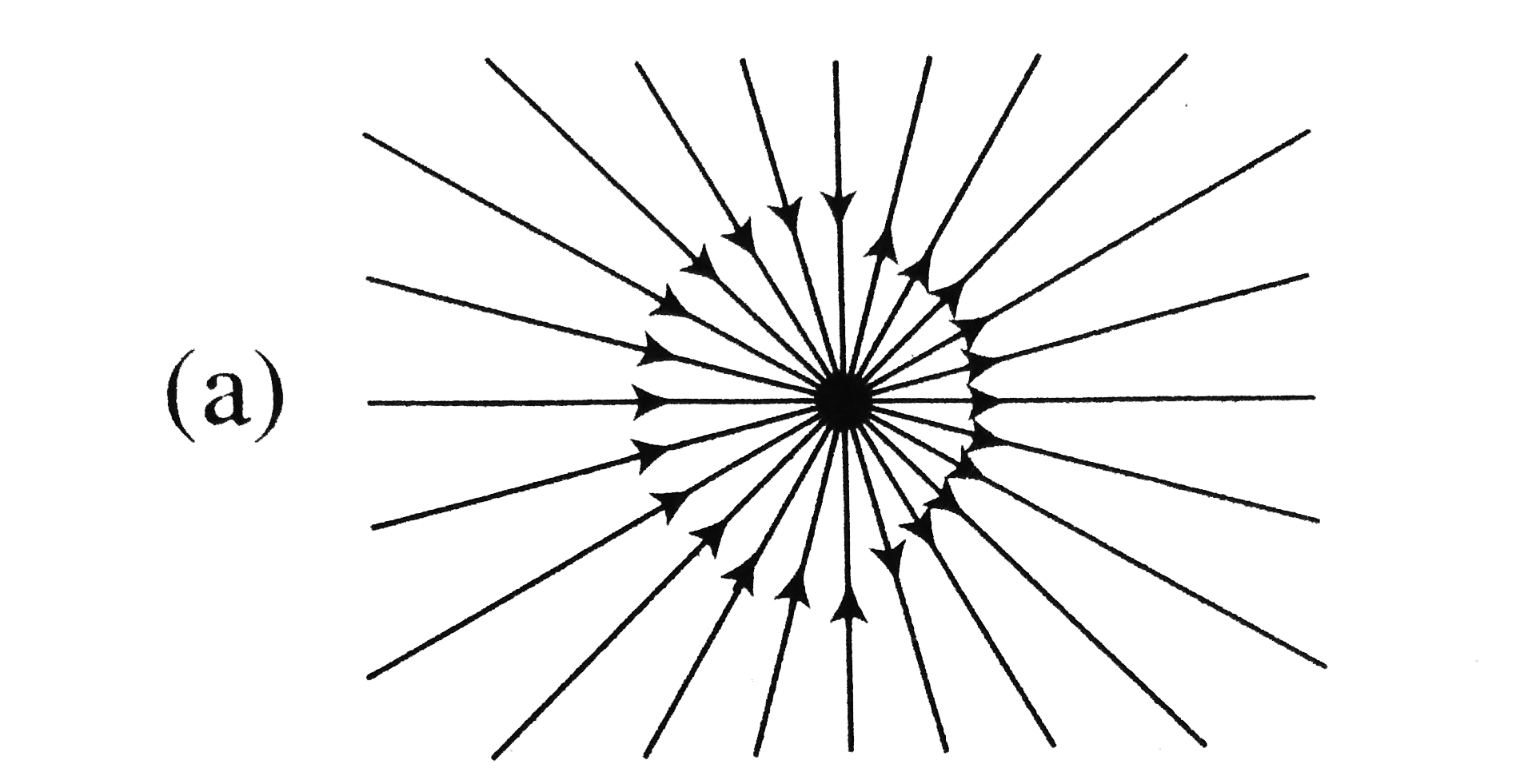



The correct Answer is:B
To determine which of the four field patterns represents a possible electrostatic field, we need to analyze the characteristics of electric field lines. Here’s a step-by-step solution:
Step 1: Understand the Properties of Electric Field Lines
Electric field lines have specific properties:
- They start from positive charges and end at negative charges.
- They cannot cross each other.
- They cannot form closed loops or circular paths.
- In a region with no charges, the field lines should not originate or terminate.
Step 2: Analyze Each Pattern
We will analyze each of the four patterns (A, B, C, D) based on the properties mentioned above.
Pattern A
- The field lines are converging and diverging simultaneously.
- This is not possible in electrostatics, as field lines cannot both converge and diverge at the same point.
Conclusion for A: Not a possible electrostatic field.
Pattern B
- The field lines appear to originate from a positive charge and terminate at a negative charge.
- There are no closed loops; the lines do not cross each other.
- This pattern can represent an electrostatic field if there are charges present outside the shown region.
Conclusion for B: Possible electrostatic field.
Pattern C
- The field lines appear to originate from nowhere, which violates the principle that field lines must start from a charge.
- Since there are no charges in the region shown, this pattern cannot represent an electrostatic field.
Conclusion for C: Not a possible electrostatic field.
Pattern D
- The field lines form a circular path.
- Electric field lines cannot form closed loops or circular paths, as they must originate from a charge and terminate at another charge.
Conclusion for D: Not a possible electrostatic field.
Final Conclusion
Based on the analysis, the only pattern that represents a possible electrostatic field is Pattern B.
---
Electric field lines have specific properties:
- They start from positive charges and end at negative charges.
- They cannot cross each other.
- They cannot form closed loops or circular paths.
- In a region with no charges, the field lines should not originate or terminate.
We will analyze each of the four patterns (A, B, C, D) based on the properties mentioned above.
- The field lines are converging and diverging simultaneously.
- This is not possible in electrostatics, as field lines cannot both converge and diverge at the same point.
- The field lines appear to originate from a positive charge and terminate at a negative charge.
- There are no closed loops; the lines do not cross each other.
- This pattern can represent an electrostatic field if there are charges present outside the shown region.
- The field lines appear to originate from nowhere, which violates the principle that field lines must start from a charge.
- Since there are no charges in the region shown, this pattern cannot represent an electrostatic field.
- The field lines form a circular path.
- Electric field lines cannot form closed loops or circular paths, as they must originate from a charge and terminate at another charge.
Based on the analysis, the only pattern that represents a possible electrostatic field is Pattern B.
Topper's Solved these Questions
- ELECTRIC CHARGE, FIELD & FLUXBOOK - A2ZCHAPTER - ELECTRIC CHARGE, FIELD & FLUXEXERCISE - Electric Field And Gauss'S Law
25 Videos
- ELECTRIC CHARGE, FIELD & FLUXBOOK - A2ZCHAPTER - ELECTRIC CHARGE, FIELD & FLUXEXERCISE - Electric Dipole
29 Videos
- ELECTRIC CHARGE, FIELD & FLUXBOOK - A2ZCHAPTER - ELECTRIC CHARGE, FIELD & FLUXEXERCISE - Electric Field Due To Point Charge
25 Videos
- DUAL NATURE OF RADIATION AND MATTERBOOK - A2ZCHAPTER - DUAL NATURE OF RADIATION AND MATTEREXERCISE - Section D - Chapter End Test
30 Videos
- ELECTRIC POTENTIAL & CAPACITANCEBOOK - A2ZCHAPTER - ELECTRIC POTENTIAL & CAPACITANCEEXERCISE - Section D - Chapter End Test
29 Videos
Similar Questions
Knowledge Check
Which of the following curves shown below cannot possibly represent electrostatic field lines?
A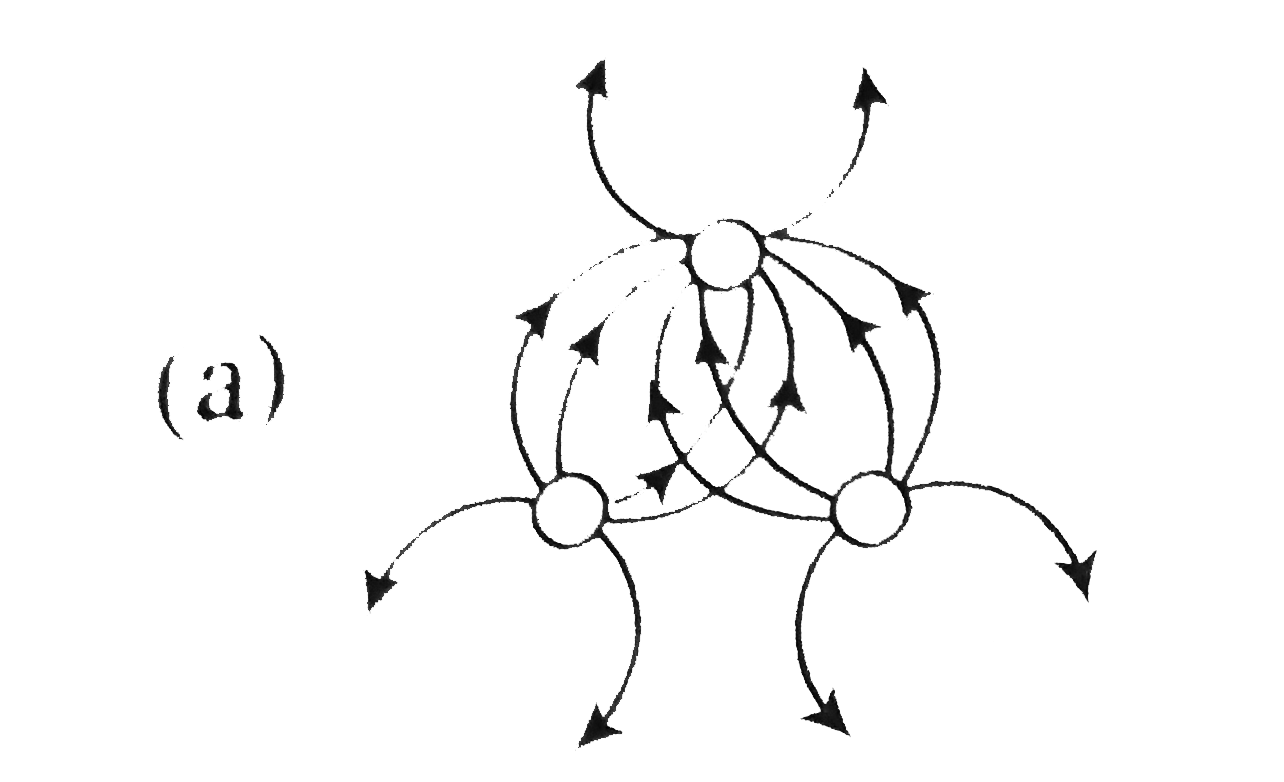 B
B C
C D
D
Which of the following curves represent electrostatic field lines correctly?
A B
B C
C D
D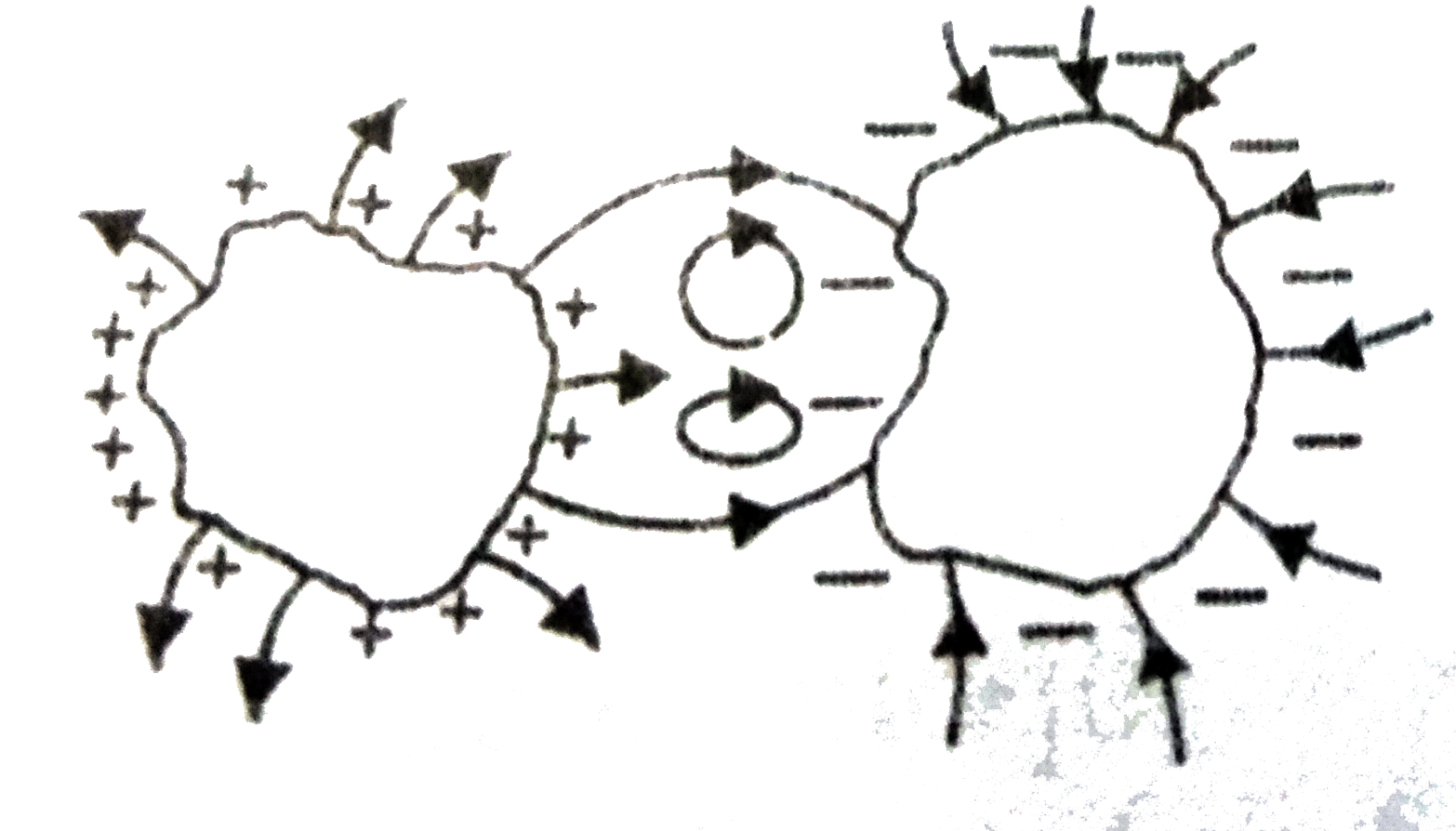
Which of the following field line patterns could represent a magnetic field?
A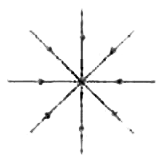 B
B C
C D
D
Is the electrostatic field pattern shown in the figure possible? (Hint: Assume a rectangular loop in the field and find the work done by the electric field on a test charge in moving along that loop. Did you arrive at a contradiction?)
View SolutionWhich of the following field lines pattern could represent a magnetic field?
View SolutionFind the electric field in region II as shown in figure.

View SolutionWhat is the example of inheritacne pattern shown

View SolutionConsider the uniform magnetic field shown:

Starting from point P and without leaving the region of magnetic field, is it possible to choose a closed path (that is, a path that returns to P) for which the line integral of the magnetic field is nonzero?
View Solution


